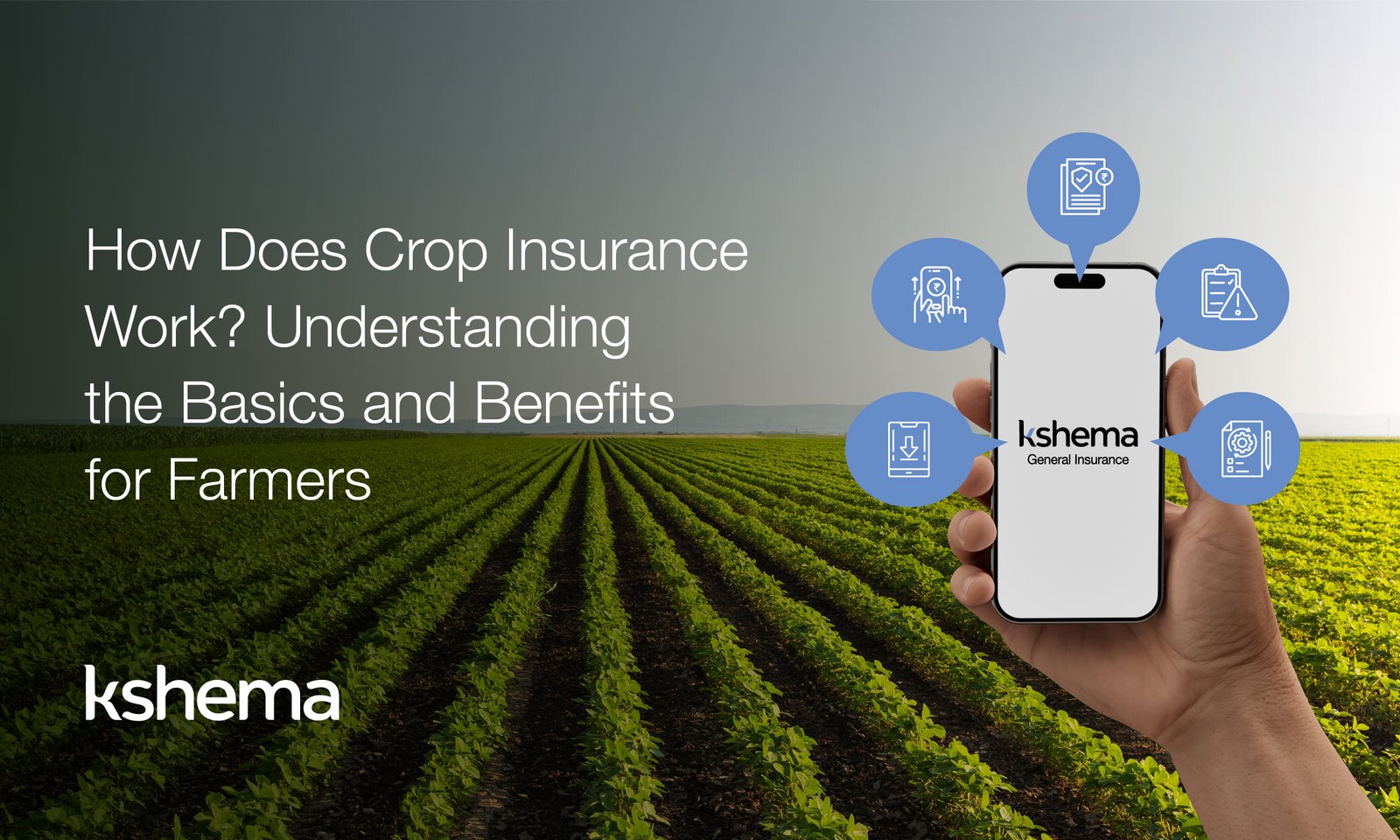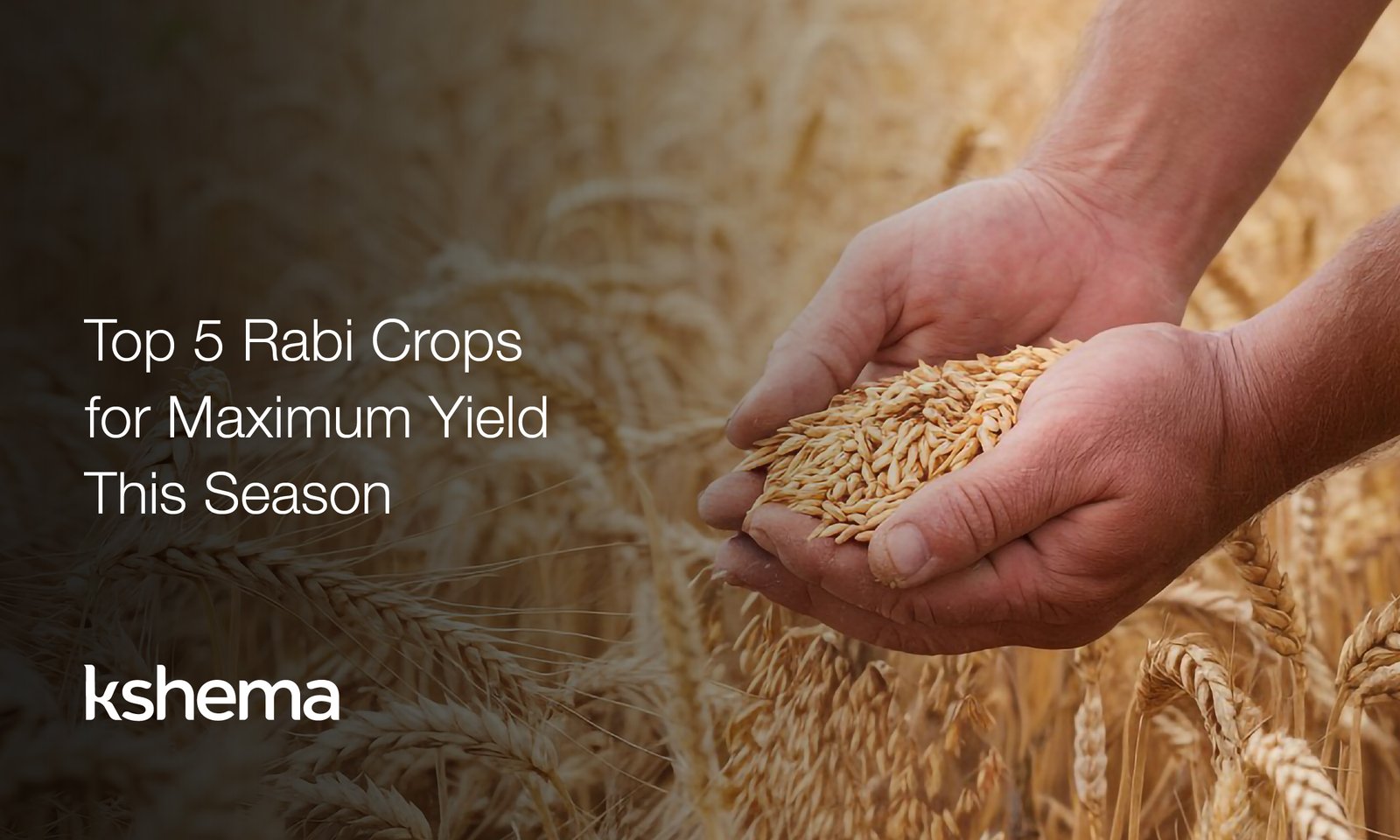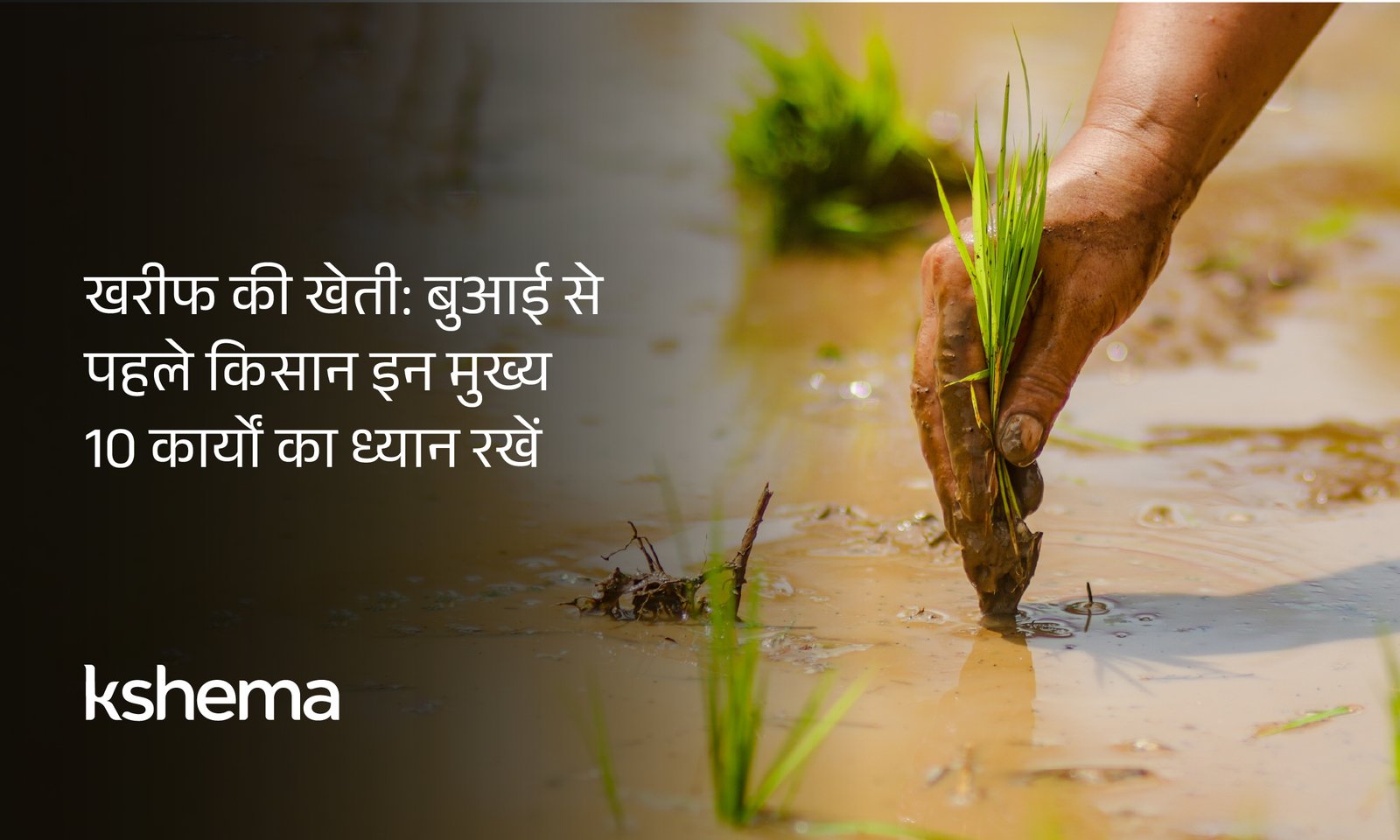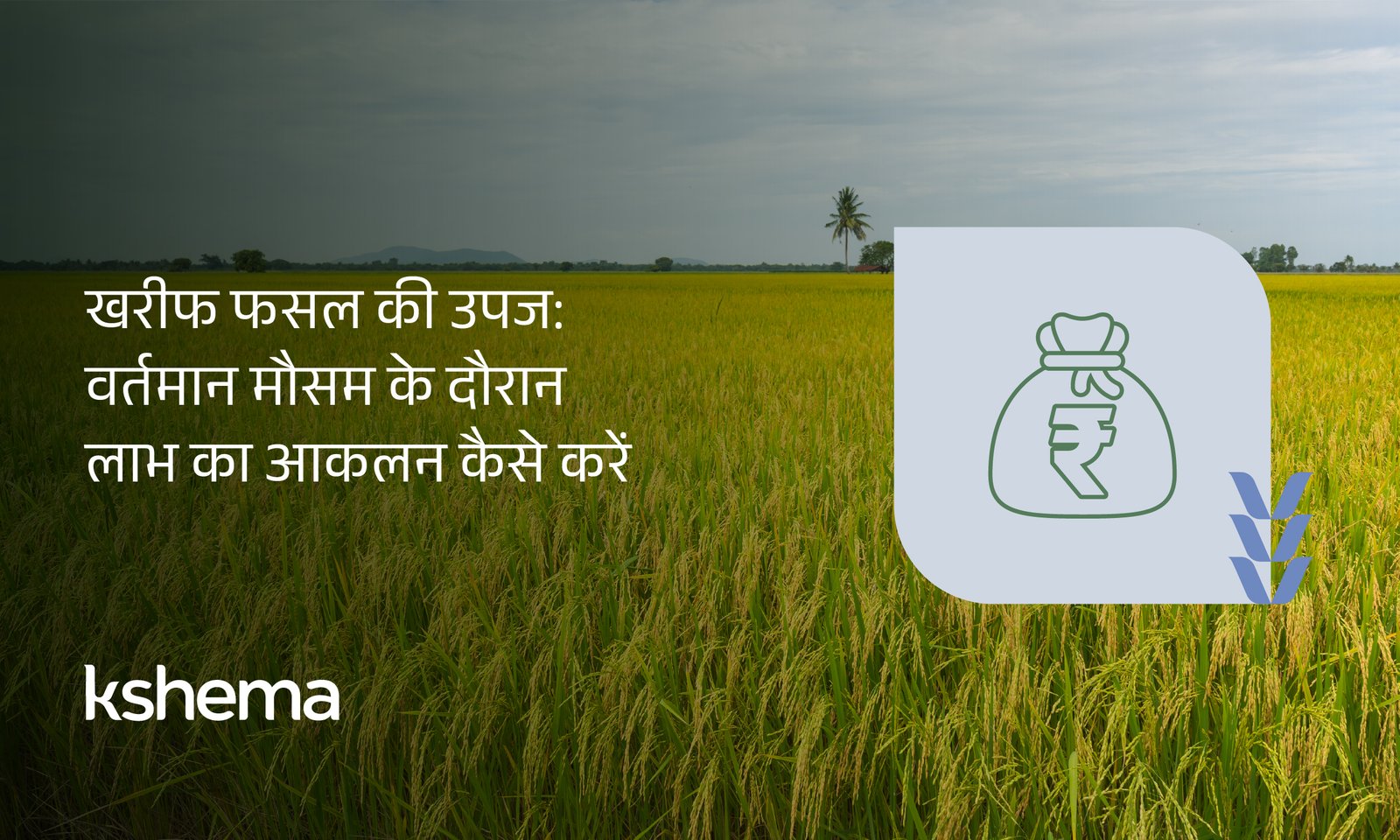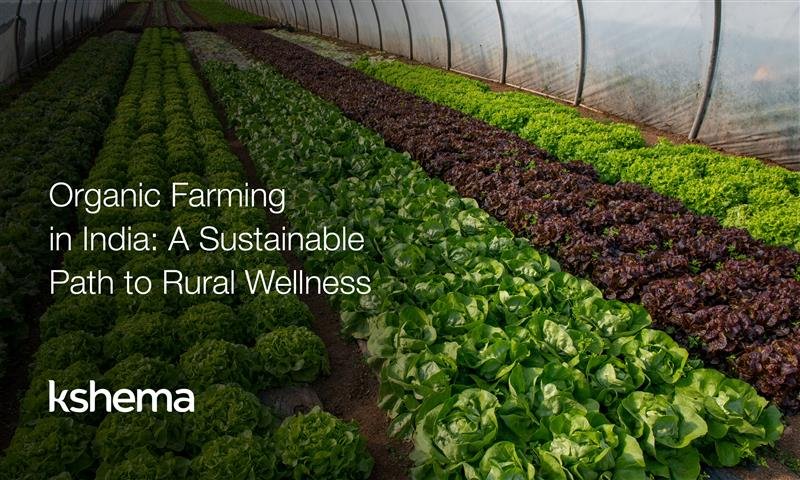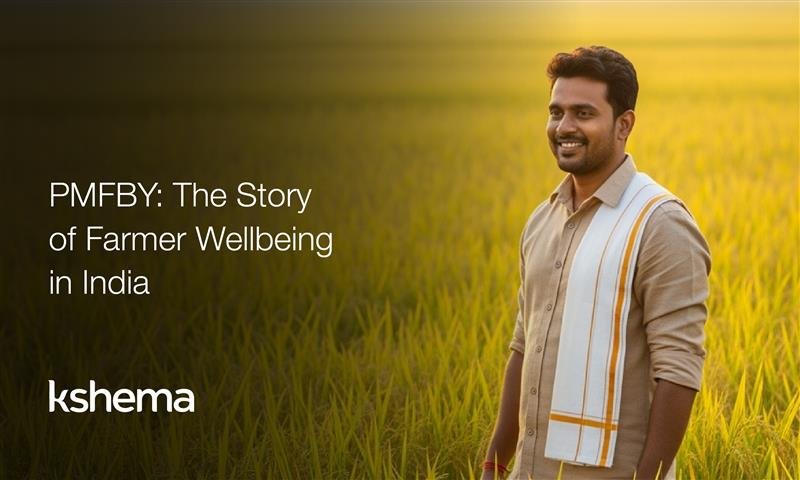Anyone engaged in agricultural activities will confirm that it comes with inherent risks that are beyond the control of farmers, including but not limited to weather conditions or soil, or market dynamics. In such a high-risk environment, crop insurance acts as a crucial safety net, helping farmers protect their investments and livelihoods. Whether you’re a seasoned farmer or just beginning your journey in agriculture, this blog will help you understand how it works, why it matters, and how it can be a game-changer for your future in farming.
What is Crop Insurance?
Agriculture insurance is a specific form of insurance solution designed to protect farmers from financial losses resulting from natural disasters, animal attacks, and other unforeseen circumstances that can impact their crops and, hence livelihoods. Insurance provides a safety net by compensating the insured for crop losses, allowing them to recover and continue their operations.
How Does Crop Insurance Work?
Crop insurance policies work by offering farmers a payout for successful claims for losses to their crops caused due to perils covered under the policy. The process involves several key steps that may vary depending on the policy type and provider.
Purchase of Policy: Farmers purchase crop insurance policies from a general insurer like Kshema General Insurance. These policies come with different coverage options, allowing the farmers to tailor the coverage based on the type of crop and the potential risks they face. The premium amount is determined by the coverage level and type of crop being insured.
Premium Payments: Farmers pay a premium to buy the crop insurance policy. This payment is typically made at the start of every crop season after the sowing is done. The premium is based on variables like the insured value of the crop, the type of coverage selected, and the level of risk.
Assessment of Risk: Before purchasing a policy, insurance providers assess the risks that the farmer may face, including historical weather patterns, crop type, location, and more. This helps determine the coverage level and premium costs.
Claim Process: If a covered event occurs (e.g., hailstorm, flood, animal attack, etc.), the farmer can file a claim with the insurer. After assessing the extent of the damage to the crops, the insurer settles the claim of the farmer based on the agreed-upon policy terms. The claim amount is calculated based on the crop loss with respect to the insured value.
Why is Crop Insurance Essential?
The importance of crop insurance cannot be overstated. It serves as a vital risk management tool for farmers, especially when climate change is causing extreme climate events with more frequency. Here’s why crop insurance is essential:
Financial Protection Against Losses: One of the most significant benefits of crop insurance is its ability to provide financial protection when things go wrong. Whether it’s a natural peril or animal attack, crop insurance helps farmers recover a portion of their losses. This allows them to continue without the need to shoulder the full financial burden of the disaster.
Stable Income: In a volatile agricultural sector, having a safety net is crucial for maintaining a stable income. Crop insurance can provide peace of mind for farmers, knowing they won’t lose everything in the event of a crop disaster. With insurance coverage, farmers can continue to pay for operational costs, such as labour, equipment, and seed, even after a poor harvest.
Encourages Investment and Growth:By protecting farmers from risk, crop insurance encourages them to invest in their operations and adopt new technologies or better farming practices. When farmers know they have coverage for potential losses, they’re more likely to experiment with new crop varieties, use advanced farming techniques, or invest in more efficient equipment.
Facilitates Access to Credit: Crop insurance can also serve as a critical tool for farmers seeking credit or loans. Financial institutions often require farmers to buy crop insurance before granting loans for operational expenses or new equipment This ensures the loan can be repaid even if the farmer suffers a loss.
Promotes Food Security: Crop insurance helps to ensure that farmers can continue producing food despite myriad challenges. With the rising global population and increasing demand for food, maintaining a stable agricultural sector is crucial for ensuring food security. Crop insurance helps prevent large-scale crop failures that can lead to food shortage
Conclusion:
Crop insurance plays a vital role in safeguarding farmers from the uncertainties of farming. With unpredictable weather patterns and other external threats, having a crop insurance policy in place is essential for ensuring the long-term sustainability of farming operations. At Kshema General Insurance, we offer tailored crop insurance policies designed to meet the specific needs of farmers, providing peace of mind and a reliable safety net for your crops.
By understanding how crop insurance works and making an informed choice, farmers can secure their future and continue producing the crops we all rely on.

